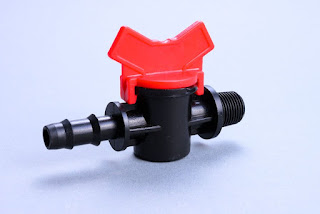Mastering the Process: Insights into Injection Molding Solutions
Introduction:
Injection molding has revolutionized the manufacturing industry, enabling the production of complex and precise plastic parts with efficiency and consistency. This blog delves into the world of injection molding solutions, providing valuable insights into the process, its applications, and the key considerations for achieving optimal results. Whether you're a product designer, engineer, or manufacturing professional, mastering the injection molding process is essential for successful and cost-effective production. Let's explore the intricacies of injection molding solutions and uncover the secrets to achieving excellence.

Understanding the Injection Molding Process
Injection molding involves the precise injection of molten plastic material into a mold cavity, which then cools and solidifies to form the desired part. The process comprises several stages, including mold design, material selection, machine setup, injection, cooling, and ejection. Each step plays a crucial role in ensuring the final product's quality, dimensional accuracy, and structural integrity.
Key Factors for Successful Injection Molding
a) Mold Design: An optimized mold design is essential for achieving consistent part quality. Factors like gate design, cooling channels, and venting contribute to efficient filling, proper cooling, and reducing defects such as warping or sink marks.
b) Material Selection: Choosing the right plastic material is critical for meeting functional requirements and ensuring the part's durability and performance. Factors like material compatibility, mechanical properties, and environmental considerations should be evaluated during the selection process.
c) Machine Setup and Process Optimization: Proper machine setup, including temperature, pressure, and injection speed settings, is crucial for achieving uniform melt flow, minimizing cycle time, and reducing defects. Process optimization through scientific molding techniques can further enhance the overall efficiency and repeatability of the injection molding process.
Applications of Injection Molding Solutions
The applications of injection molding solutions are vast and diverse, spanning across multiple industries.
One of the primary applications of injection molding is in the production of consumer goods. Items such as household appliances, electronic devices, and kitchenware are commonly manufactured using injection molding. The process allows for the creation of intricate and precise components, ensuring high-quality finished products.
In the automotive industry, injection molding plays a crucial role in producing various parts and components. From interior trims and dashboard panels to exterior body parts and bumpers, injection molding enables the mass production of these components with excellent strength, durability, and dimensional accuracy.
Medical and healthcare sectors also heavily rely on injection molding solutions. Medical devices, syringes, surgical tools, and even complex equipment like MRI casings are manufactured using this process. Injection molding ensures the production of sterile and precise medical products, meeting the strict regulatory standards of the industry.
Furthermore, injection molding finds applications in the packaging industry, where it is used to manufacture plastic bottles, caps, containers, and other packaging materials. Its efficiency and ability to produce consistent, high-quality products make it a preferred choice for packaging solutions.
Overall, the applications of injection molding solutions are extensive and continue to expand as new materials and technologies are developed. Its versatility, cost-effectiveness, and ability to produce complex geometries make it a preferred manufacturing method in various industries, contributing to the production of innovative and functional products.
Quality Control and Defect Prevention
Ensuring product quality and minimizing defects are paramount in injection molding. Quality control measures, such as regular inspections, dimensional checks, and functional testing, are crucial at each stage of the process. Employing advanced technologies like automated inspection systems and statistical process control (SPC) helps in early defect detection and process optimization, leading to improved product consistency and customer satisfaction.
Sustainability and Environmental Considerations:
In today's environmentally conscious world, injection molding solutions are adapting to sustainable practices. By incorporating eco-friendly materials, optimizing energy consumption, and reducing waste through efficient design and manufacturing techniques, injection molding can contribute to a greener and more sustainable future.
Choosing the Right Injection Molding Partner:
Selecting a reputable and experienced plastic injection molding manufacturer is vital for the success of your project. Factors such as expertise, capabilities, quality certifications, and customer reviews should be considered when evaluating potential partners. Collaborating with a reliable plastic injection mould manufacturer ensures access to technical expertise, design support, and efficient production processes, ultimately leading to high-quality parts and on-time delivery.
Conclusion
Injection molding solutions offer unparalleled opportunities for producing high-quality plastic parts with precision and efficiency. By mastering the injection molding process and considering key factors like mold design, material selection, and process optimization, plastic moulding manufacturers can achieve exceptional results. With a deep understanding of injection molding principles, professionals can navigate the complexities of this manufacturing technique and unlock endless possibilities for innovation in various industries. So, dive into the world of injection molding, explore its endless potential, and elevate your manufacturing capabilities to new heights.

Comments
Post a Comment